Are you living in a house with low-lighting that needs a tropical feel and a refreshing look? Do you want to add life indoors by adding some greenery that thrives in poor lighting conditions?
As kids, we were taught that plants wouldn’t survive without sunlight. However, while there is some truth in that statement, it is also correct to say that some plant species do not need full sun to live. Many plant varieties love the shade — whether total or partial, which means that there are plants to beautify your sun-deprived home.
Here, we have listed 27 of the best low light indoor plants for you to choose from, so that you can grow them and give touches of green to areas of your house where the sun does not shine. The plants in this list can thrive in shade or indirect light, and some can survive with artificial lighting.

- Why are lighting conditions necessary in planting indoors?
- What is full sunlight exposure?
- What does partial sunlight or partial shade mean?
- What does "bright without direct light" for plants mean?
- How to Choose a Plant
- Prayer Plant (Maranta leuconeura) – Shade-loving Indoor Plants
- Spider Plant (Chlorophytum comosum)
- Snake Plant (Sansevieria trifasciata) – Air-Purifying Indoor Plant
- Indoor Plants that Grow in Water – Lucky bamboo (Dracaena sanderiana)
- Parlor Palm (Chamaedora elegans) – Low Light Houseplants
- Peace Lily (Spathiphyllum spp.)
- ZZ Plant (Zamioculcas zamiifolia) – Plants that are Tolerant of Low Light Conditions
- Tough-as-Nails Indoor Plants — Cast Iron Plant (Aspidistra Elatior)
- Devils Ivy (Epipremnum aureum) – Best Plant for New Gardeners
- Maidenhair Fern (Adiantum) – Moisture-loving Indoor Plant
- Zebra Plant (Aphelandra squarrosa)
- Peacock Plant (Calathea majestica)
- Staghorn Fern (Platycerium bifurcatum) – Best Low Light Hanging Houseplants
- Flamingo lily (Anthurium andraeanum) – Best Houseplants for Low Light
- Rex Begonia (Begonia rex-cultorum)
- Chinese Evergreen (Aglaonema) – Best Indoor Plants for New Gardeners
- Ponytail Palm (Beaucarnea recurvata)
- Swiss Cheese Plant (Monstera deliciosa) – Stunning Indoor Plants
- Arrowhead Plant (Syngonium podophyllum)
- English Ivy (Hedera helix) – Hanging Basket Plants
- Boston Ferns (Nephrolepis exaltata)
- Moth Orchid (Phalaenopsis) – Year Round Flowering Indoor Plant
- Wax Plant (Hoya carnosa) – All Purpose Plant
- Dumb Cane (Dieffenbachia)
- Gloxinia (Sinningia speciosa) – Indoor Plants with Velvety Flowers
- Lacy Tree (Philodendron bipinnatifidum)
- Baby Rubber Plant (Peperomia obtusifolia) – Dish Garden Indoor Plant
Before jumping to that list, let us first discuss the essential information about growing the right indoor plants for low light, and how to care for them in general. Plants that grow in shade have special needs that plants growing best in sun do not have.
Why are lighting conditions necessary in planting indoors?
Knowing lighting conditions is essential in planting indoors because plants have different growing needs. One plant may grow well in full shade while others may not. For any plant to survive, always check lighting requirements.
What is full sunlight exposure?
If you want to get the effects of full sun, place the plants in a south-facing window. If you do not have a window in a south-facing the direction, keep in mind that a plant that needs full sun must get at least six hours of direct sunlight exposure.
However, this might be the trickiest lighting condition that you can achieve because even if many plants like full sun to bloom, some might not be able to handle the heat that usually comes with it. The key is to have at least six hours of light for the plants to grow well — no need to expose it to the sun all day long.
What does partial sunlight or partial shade mean?
For your plants to receive partial sunlight and shade, put them in an east or west-facing window. This area will give the plants morning and evening sun. It will also prevent the plant from being exposed to a lot of heat from midday or noontime sun. Many plants, indoor or not, especially the flowering types, bloom best if they are in partial sun and shade.
What does “bright without direct light” for plants mean?
The best areas for indoor plants that don’t need sunlight or direct light is also the south-facing window, but, the plant should be placed a few feet away. East or west facing windows may be of use if they are large enough for daylight to come through the windows, with the plant sitting far away from early sunset or early midday sun.
How to Choose a Plant
Before choosing a specific plant, check the details and requirements of the species to determine if there are any limitations on lighting and what the best shade plants for pots will be.
Also, while lighting conditions are essential when choosing low light houseplants, other vital factors may affect plant survival such as humidity, water, fertilization, growing medium, and temperatures. The essential details on each plant listed below are also included in the description.
The Best Low Light Indoor Plants
Some of our recommended plants have dramatic leaves, others have beautiful flowers for hanging baskets or are great for a pot sitting on your desk. Choose a combination to brighten a room and clean the air of dangerous toxins.
Prayer Plant (Maranta leuconeura) – Shade-loving Indoor Plants

Prayer plants are low-growing indoor shade plants that add beauty to any household, and can also be great plants for work. These finicky plants have broad, oval leaves with stripes that range from pinkish-red to dark green splotches.
What makes these plants unique is that when dusk falls, their leaves fold down as if they are human hands posing into praying position.
Caring for prayer plants is easy; they only need good drainage and barely damp soil. Also, prayer plants are not fond of direct sunlight. They grow best in shady, warm locations, but may tolerate low amounts of sunlight.
Spider Plant (Chlorophytum comosum)

The spider plant, otherwise called the airplane plant or ribbon plant, is a native perennial evergreen from southern Africa. It peaks at two feet high. The most distinguishing feature of this indoor plant is the spray of long and slim leaves, which looks like ribbons.
If viewed from above, the leaves resemble spider legs, characteristic of its curved shape — making it an ideal option for hanging plants at home, as the leaves hang down beautifully if placed in a basket, showing a beautiful cascade.
Apart from the graceful foliage, this plant is one of the easiest plants to grow indoors since it can thrive and flourish even in indirect lighting conditions. However, water them well but make sure that the soil drains to avoid rotting roots.
Snake Plant (Sansevieria trifasciata) – Air-Purifying Indoor Plant

Mother-in-Laws Tongue — the common name snake plant, is a durable plant that adapts well to indoor conditions. Some say that the leaves look like a sword because of their long and upright characteristics.

Snake plants tolerate low light conditions, as well as lack of moisture. Care for these plants is very straightforward. It remains fresh even if unwatered for weeks. The snake plant makes one of the best bedroom plants.
In research done by the National Aeronautics and Space Administration or NASA, the snake plant proved to be effective in purifying indoor air from toxins such as benzene and formaldehyde.
Indoor Plants that Grow in Water – Lucky bamboo (Dracaena sanderiana)

If you like unique, small indoor plants for low light conditions, this plant might be the best option. Lucky bamboo is fascinating not only because of how it looks but also how it grows. Surprisingly, it likes to mature in water, which makes it easy to cultivate.
These shady container plants add an interesting addition to any room and are quite simple to grow. According to some businessmen and feng shui believers, this plant brings luck as it attracts auspicious chi energy.
Aside from being a symbol of good luck, lucky bamboo can survive in a variety of lighting conditions, including low light. They also make great gifts for those who are hard to buy for.
Parlor Palm (Chamaedora elegans) – Low Light Houseplants

Parlor Palm, also known as Neanthe Bella, is one of the best low light indoor plants because it can thrive indoors where other palm plants may struggle. This indoor palm tree works like Snake plants, as the Neanthe Bella is included in NASA’s list of plants that clean air.
If you want good bedroom plants that can help purify the air in your room, this might be the best pick for you. According to NASA’s research, the Parlor Palm helps absorb carbon dioxide and promote oxygen release (..). To grow Parlor Palm, re-pot once a year and use fertilizer at least every two months.
Some sun may be helpful for its growth; however, low light is tolerable. Use this plant in a bare corner or set it on a dresser to add some tropical flavor to a room.
Peace Lily (Spathiphyllum spp.)
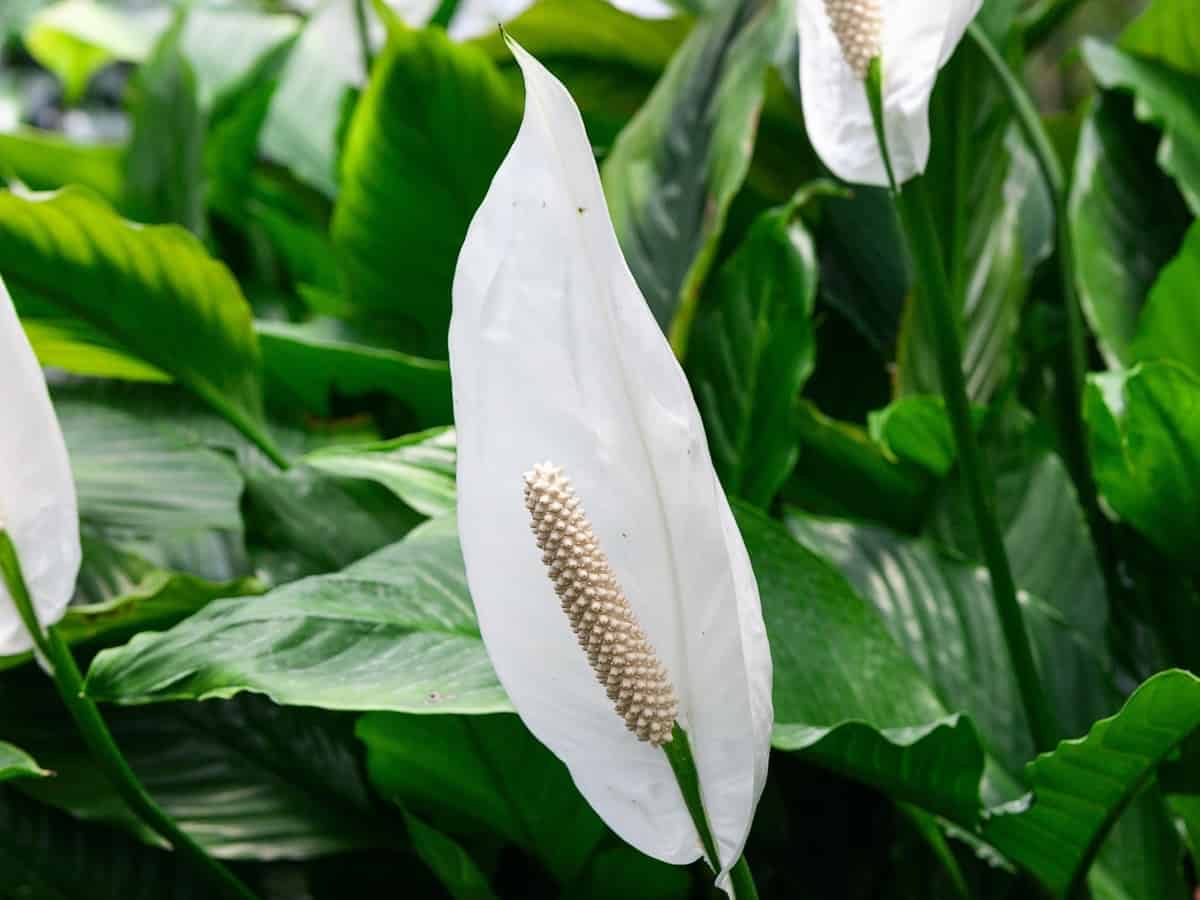
Peace lilies are beautiful low-maintenance indoor low-light houseplants with white flowers. Although not true lilies, this species belongs to the Araceae family of plants, which are those with a partially enclosed spadix or spike-like bud.
Most peace lilies serve as floor plants because they can grow up to three feet tall with big green foliage but if you keep them trimmed, they can work as a plant for a table or large desk. If you like indoor plants that don’t need sunlight or low-light tolerant bushes, these tropical shade-loving lilies are perfect as flowering plants for indoors at home or for the office.
While they are famous for their survival abilities under low-light conditions, peace lilies help cleanse the air as well. NASA recognizes them as one of the top ten air purifying plants (..).
It’s a bonus to have air purifying house plants. Not only do you get the added beauty and sometimes the fragrance they provide, but they remove harmful toxins that you may not even realize are in the air.
Always try to have a peace lily or other houseplant in several rooms of your home for ambiance and improved air quality. Create a homey atmosphere will cleaning the air at the same time.
ZZ Plant (Zamioculcas zamiifolia) – Plants that are Tolerant of Low Light Conditions
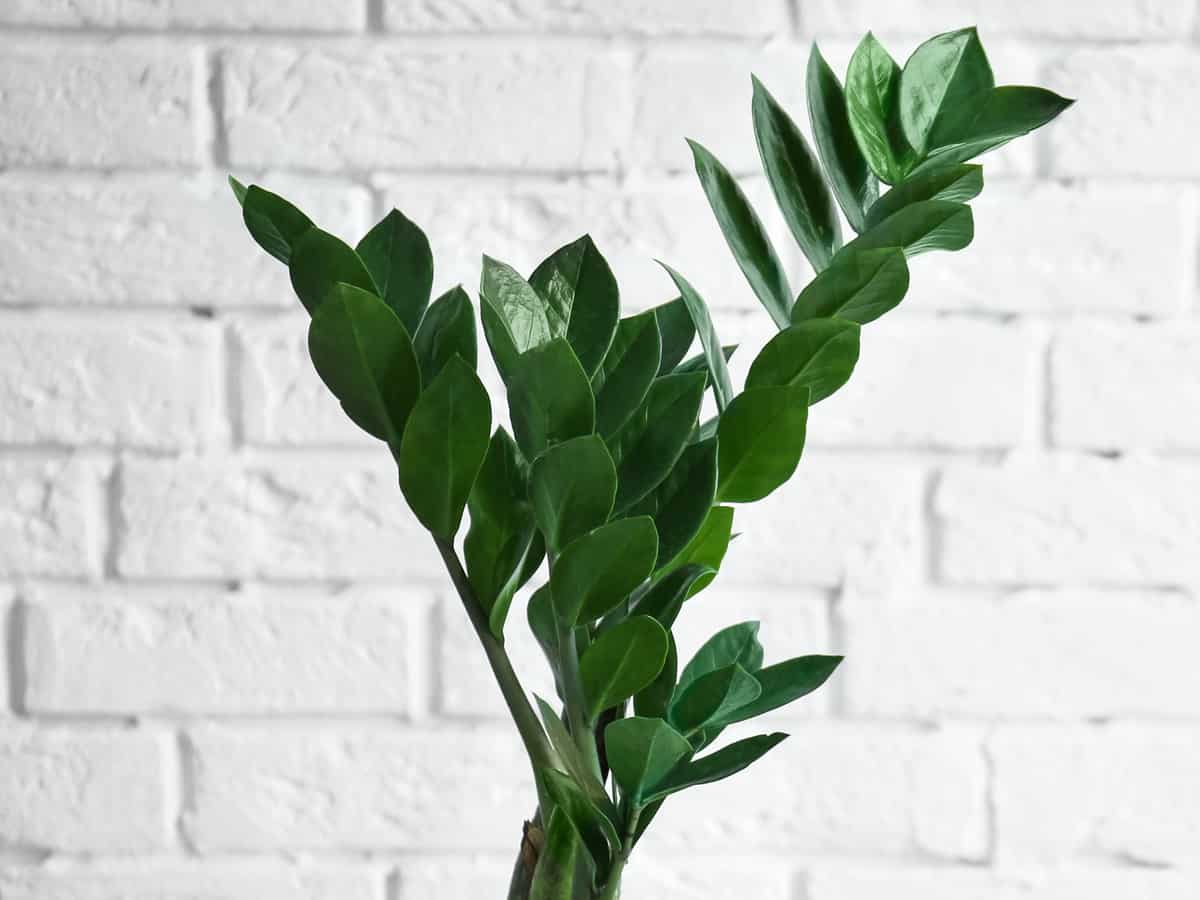
ZZ plants have many favorable traits aside from having attractive dark green leaves. They are drought tolerant and can survive even if neglected for days. To top it off, they accept low-light conditions, making them the best indoor low light plants among many short-sized household plants.
Care for these plants is not difficult. They do not need any particular type of soil nor daily watering. Just place them in a low lighted area and water when they are thoroughly dry.
Tough-as-Nails Indoor Plants — Cast Iron Plant (Aspidistra Elatior)
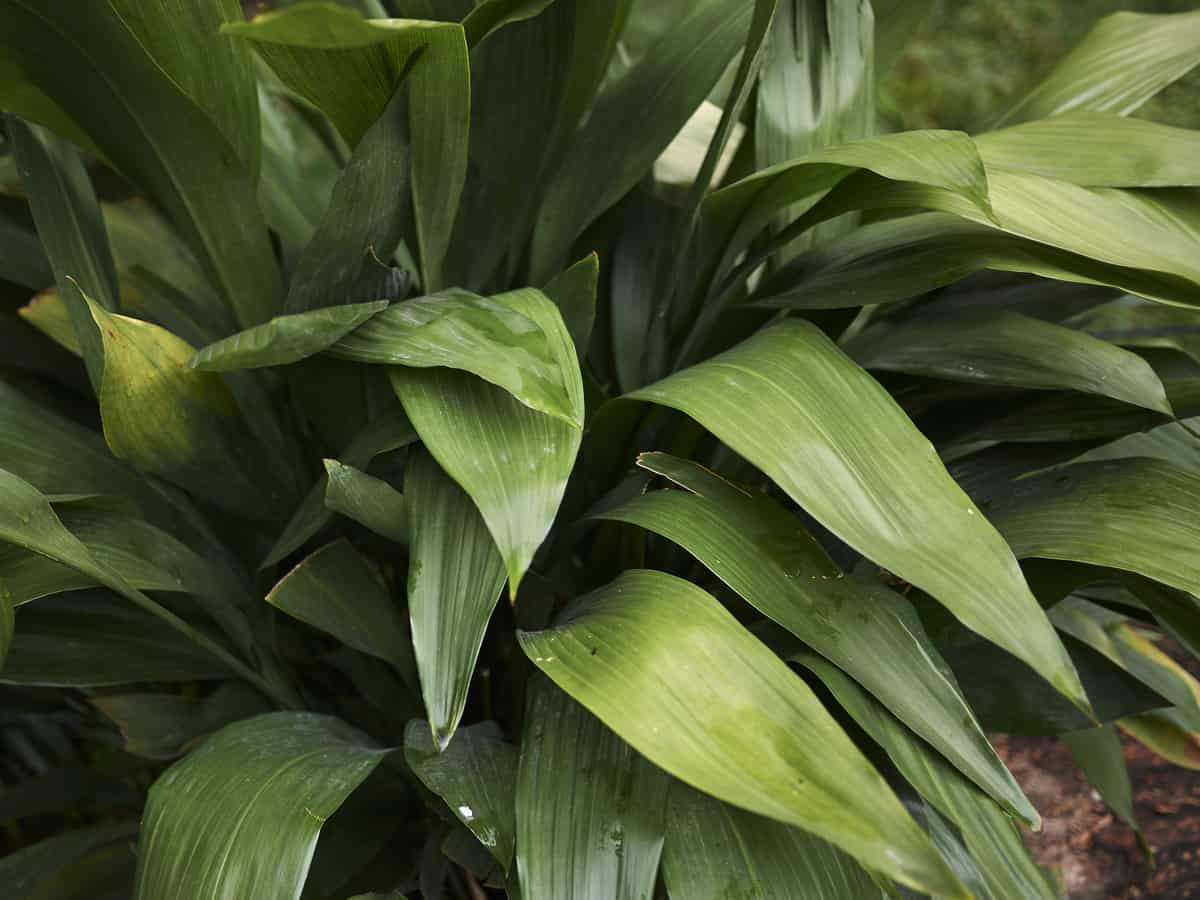
A Cast Iron Plant is a perennial favorite in many countries. They are a lush, fuss-free, leafy evergreen that can tolerate various indoor growing conditions. As the name implies, this plant is robust and as nearly as durable as iron — figuratively, that is.
This plant can thrive with irregular watering, in low light, fluctuating temperature, and low humidity. Avoid placing this plant in areas with bright light or direct sun because it may burn the leaves. Also, remember to put it in a pot with holes for drainage.
Devils Ivy (Epipremnum aureum) – Best Plant for New Gardeners

Devil’s Ivy, or Golden Pothos, is a vining plant that is native to the Solomon Islands in Papua, New Guinea. Other common names include Hunter’s Robe, Ivy Arum, Taro Vine, and the Solomon Islands Ivy. This plant was given the name Devil’s Plant because it is nearly impossible to kill.
It has heart-shaped leaves of green and yellow. If you are a new gardener looking for a houseplant for low light that can also survive infrequent fertilizer feeding, and standard houseplant potting soil, the Devil’s Ivy is the plant for you.
Maidenhair Fern (Adiantum) – Moisture-loving Indoor Plant
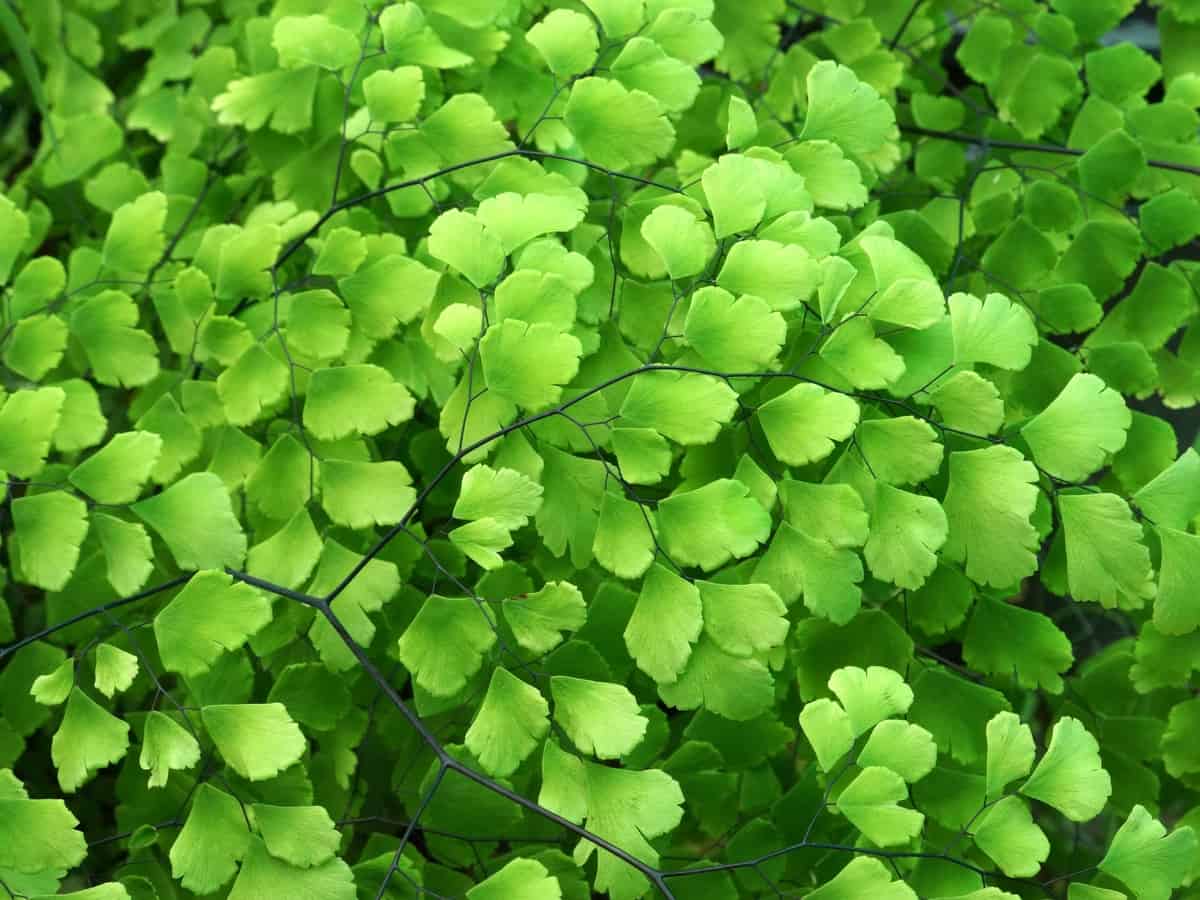
If you are searching for plants that are perfect for areas with medium light at your home, check maidenhair ferns or walking ferns, as they are sometimes called. These plants are not as robust as spider plants nor cast iron plants, but their gorgeous look is one-of-a-kind.
As long as you meet its growing needs and plant care conditions, this plant will reward you with the most exquisite tropical effects. To keep the fronds looking good, maintain moist soil, especially during the growing season.
And, due to its inability to thrive in pots that lack moisture, avoid using clay pots because they may cause the soil to dry out quickly. When the soil dries, the greenery will die immediately.
Zebra Plant (Aphelandra squarrosa)
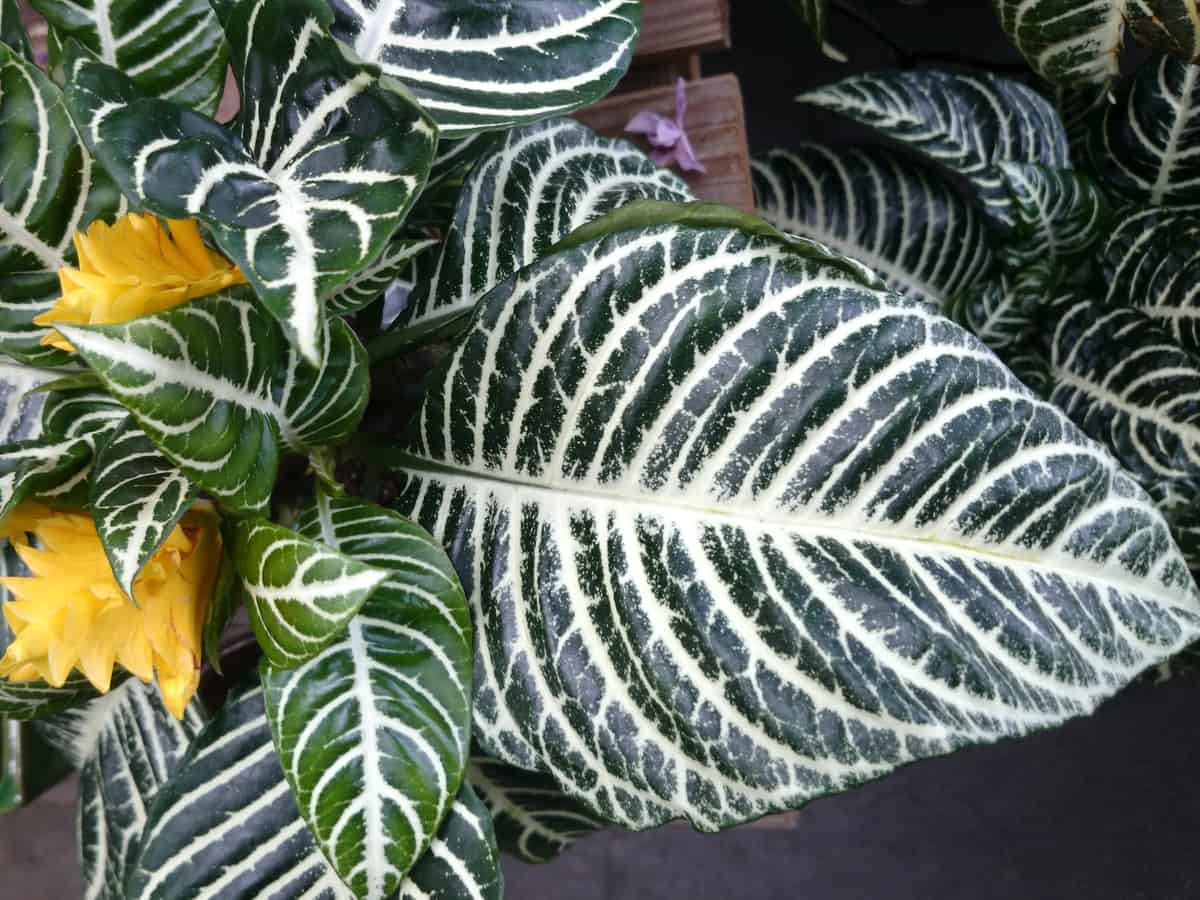
Zebra plants grow well indoors given proper care. They can be great ornamental additions too, as they produce golden yellow flower bracts and beautiful foliage.
However, different lighting conditions may be needed when growing zebra plants. In general, they like filtered light and may tolerate a bit of shade.
The flowers bloom best if you place them in an area with indirect sun and bright light. The perfect temperature for the plant to grow is between 65°-80°F, which coincides with most households’ temperature range.
Peacock Plant (Calathea majestica)
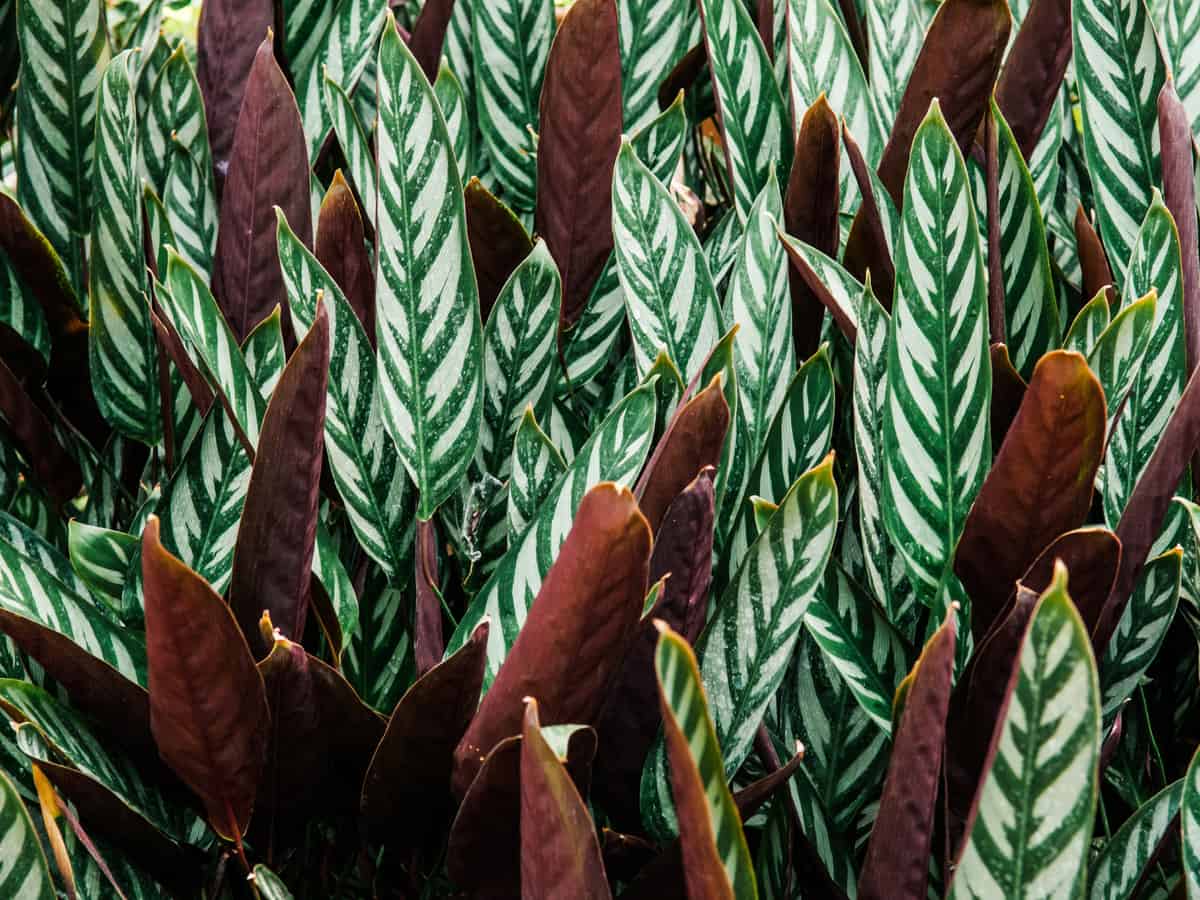
Many people dub the Peacock plant or Rattlesnake Plant as a zebra plant — the Aphelandra squarrosa. This interchange of names is because both species have markings similar to that of the zebra’s stripes. They look identical at first glance, but if you look closely, their foliage has many differences.
Peacock plant has dark brown to reddish-purple undersides while Aphelandra has emerald green foliage. Aphelandra’s leaves are also more substantial than that of Calatheas.
To grow Calathea majestica, choose an area with medium to low light because their leaves do not like much sun. Water them to keep it moist but avoid soaking.
Staghorn Fern (Platycerium bifurcatum) – Best Low Light Hanging Houseplants
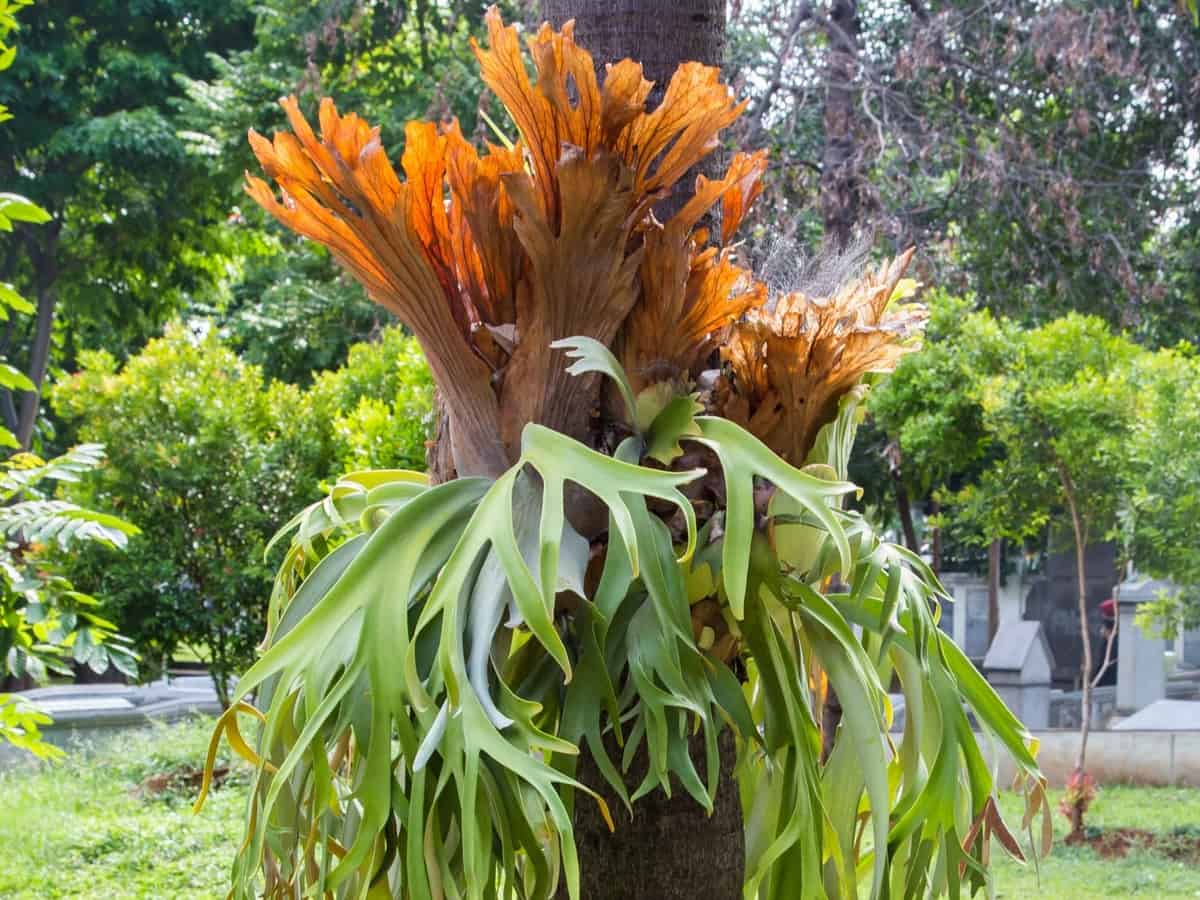
Staghorn Ferns are cool, wacky plants that can be a solution to any plant lover’s botanical indoor houseplant needs. Staghorns are known for their uniquely shaped leaves that look like horns of male deer, hence the name.
Although you can buy young staghorn plant in pots or plant boxes, mature ones need to be hung in a basket or mounted on a board. So, if you want to see hanging houseplants insideyour house, this might be the plant that you are looking for. Just pick a basket or on a piece of wood and make sure not to break the staghorn’s roots, because they help to hold them in place.
Flamingo lily (Anthurium andraeanum) – Best Houseplants for Low Light

Also called Painter’s Palette, the Flamingo Lily is one of the few low light houseplants that blooms in normal household conditions. Flower colors range from green, orange, red, pink, white, and yellow, which is beautiful to behold.
The word Anthurium originates from the Greek words “anthos” and “oura,” which means flower and tail, respectively. The tail refers to the spadix or central stalk that resembles a tail.
Native to the tropics of South America, these plants grow best with warm temperatures and humid conditions. Because they are one of the species of indoor plants that don’t need sunlight, they are trendy in many homes, offices, and establishments with natural light. To keep their beauty, never place them in direct sunlight to prevent colors from fading (..).
Rex Begonia (Begonia rex-cultorum)

Rex begonia is probably one of the best low light indoor plants around. Its flowers may be insignificant, but with its fabulous foliage offering a broad range of shapes and colors, every eye will turn to look at this plant. And, despite its exotic diva looks, care for Rex begonia is not that difficult.
To keep this plant happy, put it in a location with indirect light and water the soil when it is too dry to touch. Also, avoid placing them near windows or doors where drafts come in. If taken care of properly, it will be an eye-catching indoor plant.
Chinese Evergreen (Aglaonema) – Best Indoor Plants for New Gardeners
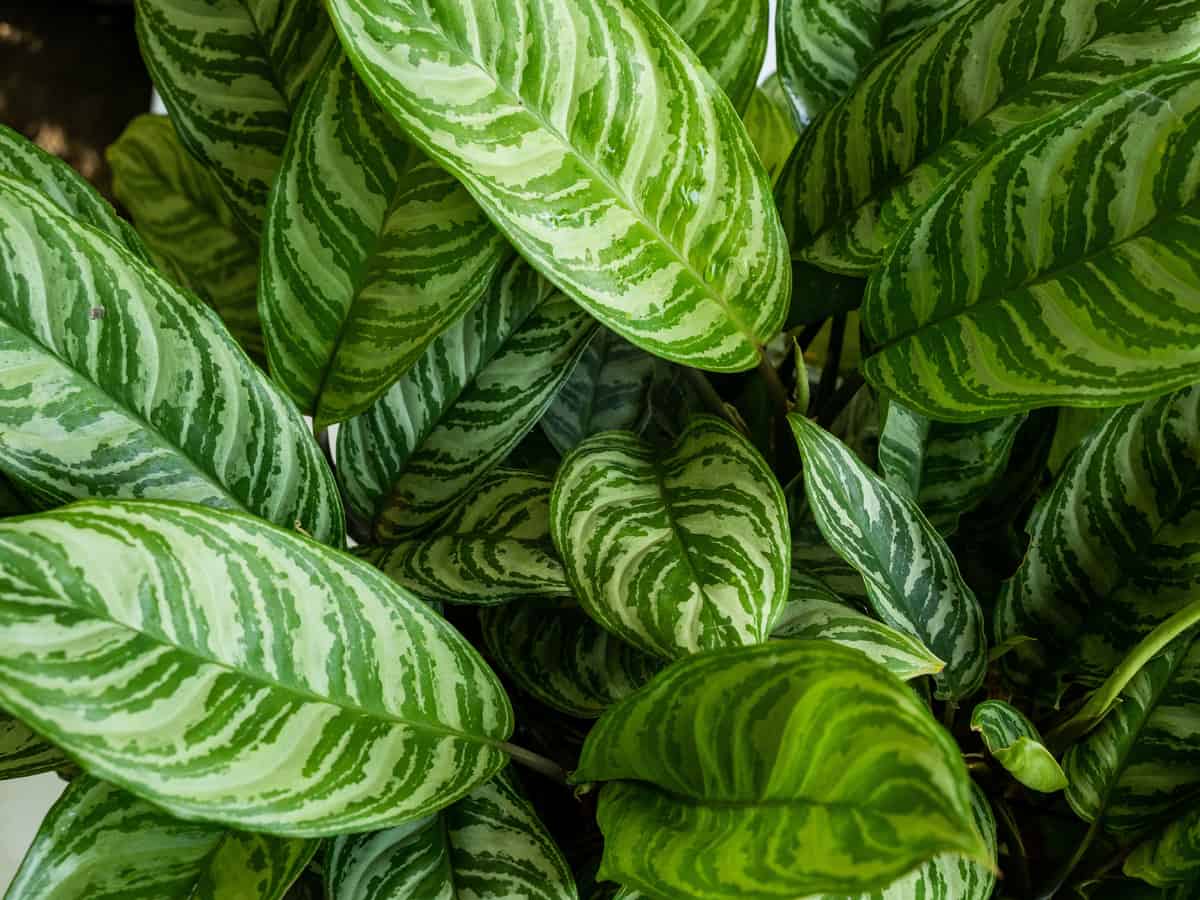
Growing Chinese evergreen plants can make a newbie gardener look like an expert. Why? Because it is a type of indoor plant that does not require complex care. This tropical plant tolerates poor light, drought, and dry air.
Chinese evergreens enjoy moderate watering, which means that you have to make sure that you are not watering it too little or too much. Since it is prone to accumulation of dust, clean the leaves as necessary by wiping them with a soft, damp cloth or simply placing the plant under a low-spraying shower and allowing them to air dry.
Ponytail Palm (Beaucarnea recurvata)

A ponytail palm, also known as elephant foot, is a distinctive-looking and a beautiful plant that can survive on benign neglect. A typical ponytail palm has a bulbous trunk, which looks like an elephant’s foot. On the trunk’s top is a cascading ponytail of long, curvy leaves that develop as the plant matures.
An average room temperature is suitable for this plant and in winter, avoid placing it near cold windows. Too much light may induce the leaves to wrinkle, so put it in a spot without direct sunlight.
If given proper care, this plant can be a fabulous centerpiece in a living room table or as a corner table accent. So if you are looking for small indoor plants low light, try ponytail palms for a change.
Swiss Cheese Plant (Monstera deliciosa) – Stunning Indoor Plants
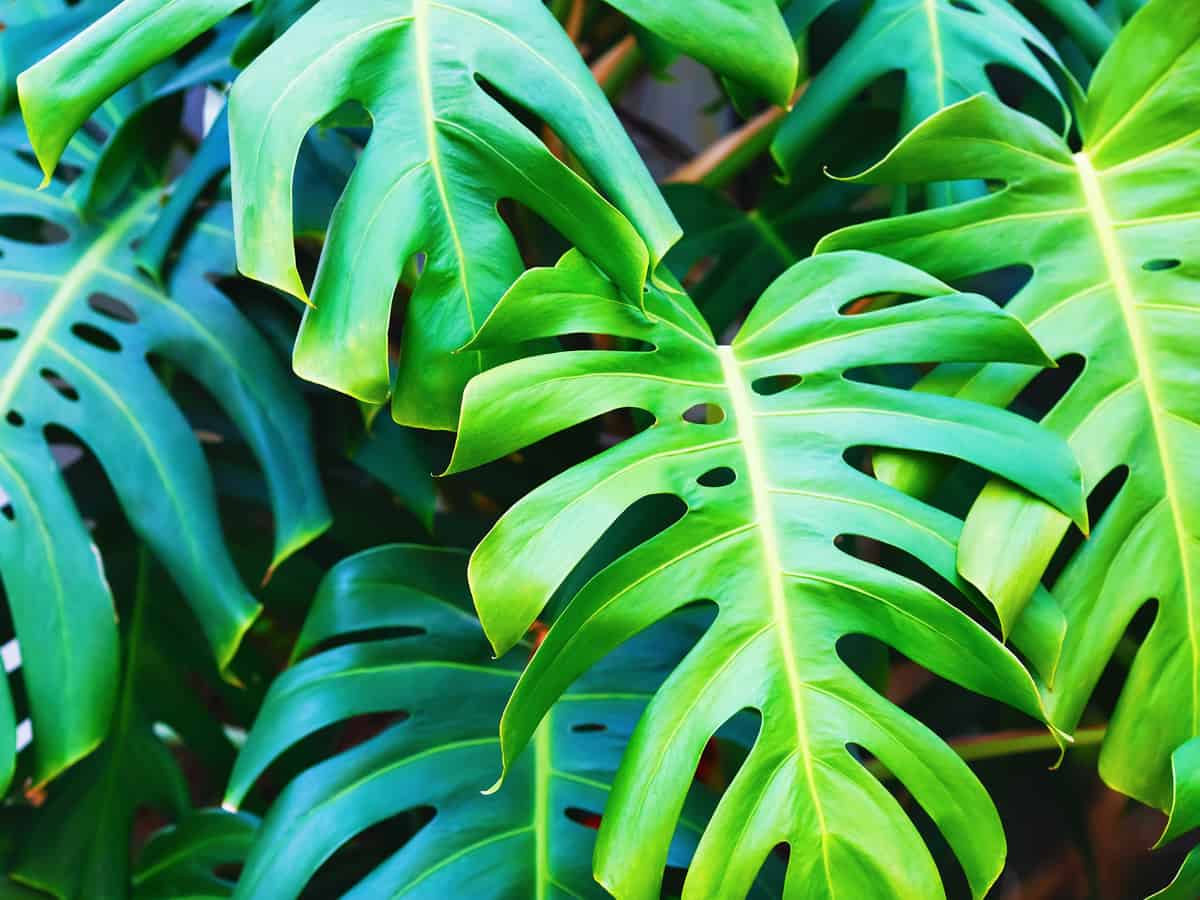
Swiss Cheese Plant, otherwise called Monstera or Ceriman, is a vine native to Central America and Southern Mexico. The common name Swiss Cheese is due to its distinctive holes on the leaves, resembling cheese holes. If grown naturally in its tropical habitat outdoors, this plant can produce deliciously edible fruit that resembles a green ear of corn with scales.
As fruit plants to grow indoors, it is important to realize that it will be difficult for the plant to bear fruit, but not impossible. However, many people love Monstera because of its stunning and unusual split leaves.
Monstera offers a lot, not just for the fact that it is a show stopper but since it is easy to care for and a must have for any indoor botanical needs. It can grow well with watering once or twice a week and can thrive in low light. It likes warm temperatures so a little bit of sun won’t hurt.
Arrowhead Plant (Syngonium podophyllum)

Arrowhead plants or Goosefoot, are plants that are native to Bolivia, Latin America, and Mexico. Many horticulturists cultivate them as indoor houseplants. Some gardeners grow them on trellises, walls, or other structures because of their natural ability as climbing vines.
However, even if these species love to climb, they are easy to prune, which means that you can stop them from being too bushy. To grow these plants, provide them with indirect light to prevent scorching of the leaves.
Temperatures need to be maintained all year round to at least 60°-85°F. Some may handle 50°F, but anything below that may kill the plants.
English Ivy (Hedera helix) – Hanging Basket Plants
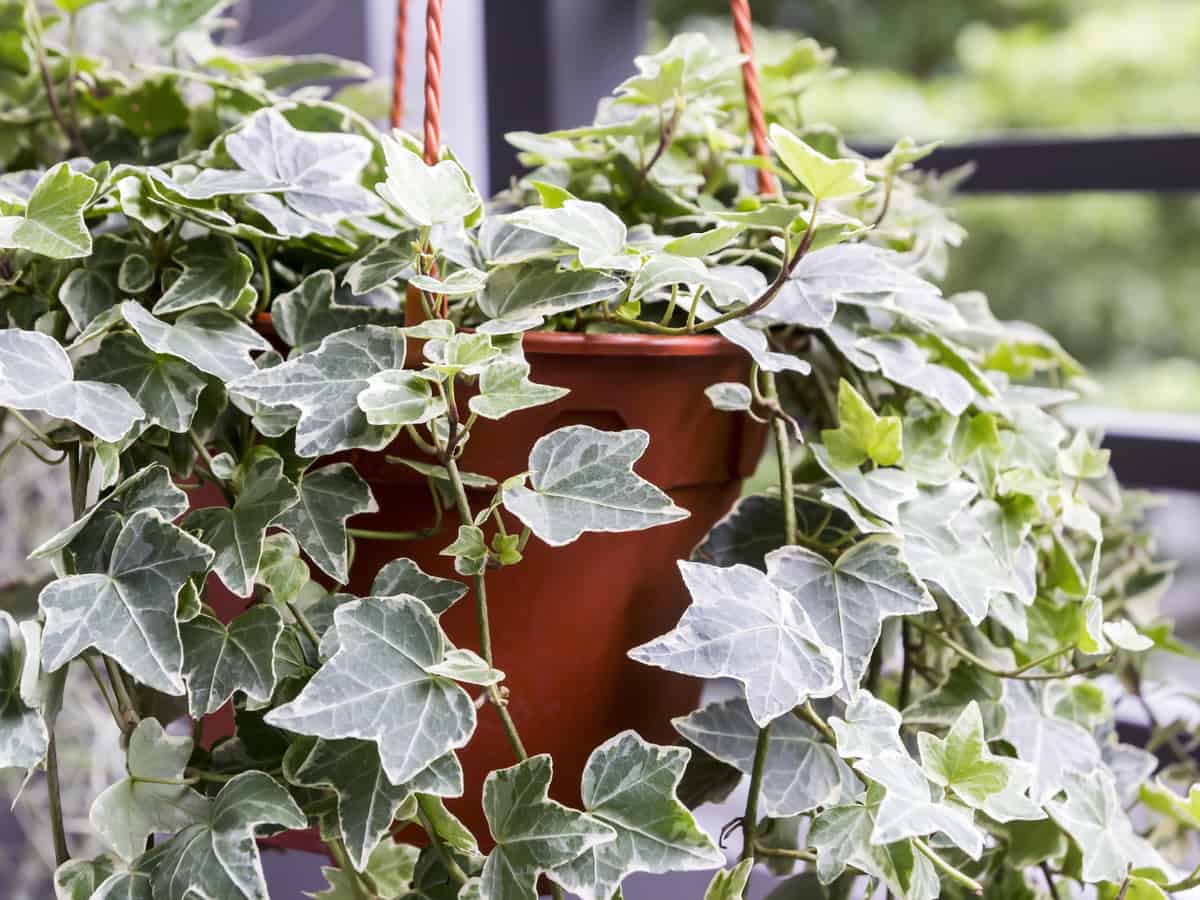
Perfect for hanging baskets or pots, the eccentric foliage of English Ivy is an excellent pick for those who like to lush up a dull room. It comes in various shapes and colors and thrives well in low light.
They are better off growing in a north-facing windowsill, away from direct sunlight. One concern though, is that pests like spider mites can invade English Ivy, so to prevent that, mist the plants as often as possible.
Boston Ferns (Nephrolepis exaltata)

Boston ferns are one of the most favored houseplants. They thrive in indirect light and consistently well-drained, but moist soil. They grow and get bigger as their container pots allow. If placed in a large planter box, they will grow large. If planted in small pots, they will remain small.
Some use them as hanging plants in plastic pots, and it is okay to leave them like that. Otherwise, you can re-pot them in a glazed terra cotta or plastic container. These plant boxes make it easier for Boston ferns to live as these type of pots take longer to dry out.
Also, you can place them near windows, and they can be attractive mid-height plants for areas of the house that are in partial to full shade. Keep in mind that full afternoon sun may burn the fronds so to keep it green and fresh-looking, only morning sunlight is allowed.
Moth Orchid (Phalaenopsis) – Year Round Flowering Indoor Plant
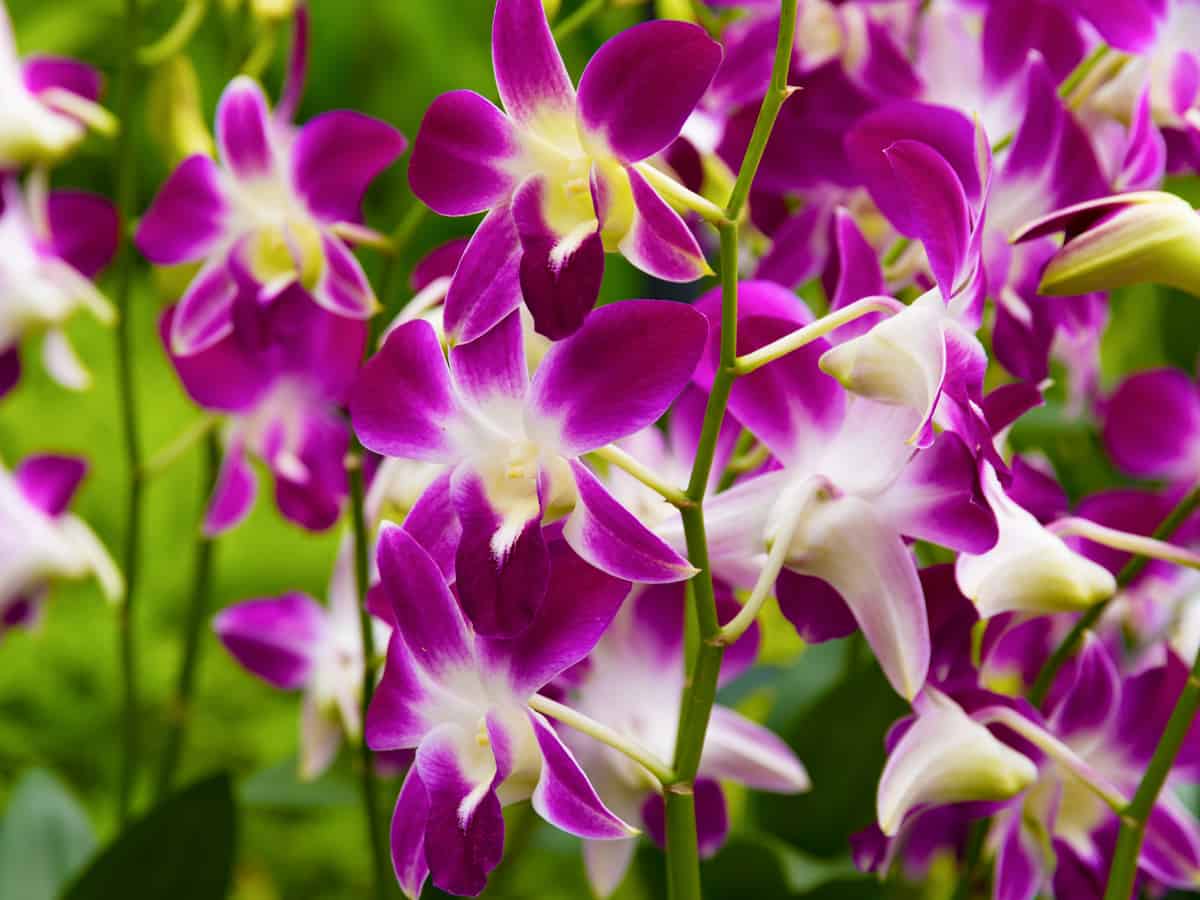
Moth orchid, the common name of the Phalaenopsis, is a species of orchid that has quickly become one of the most famous household flowering plants. It is a low light indoor orchid with exquisitely colored blooms that are present year round. This is one of the aromatic indoor plants that add a pleasant scent wherever you put them.
Its beautiful flower and ability to grow without too much attention are the main reasons for its popularity. Also, there are more than fifty species of these orchids, offering you several options of various colors and shapes for all interior styles.
One essential factor that you should consider is lighting conditions for orchids. They all have different lighting needs. Moth orchids do well with indirect light from a west or east window (..).
Wax Plant (Hoya carnosa) – All Purpose Plant

Wax plant, aka porcelain flower plant or Hoya, is one of the easiest and the most exciting plants to grow indoors. This plant produces clusters of star-shaped, white to pinkish-white flowers with a five-point center structure.
These blooms are so intricately detailed and uniformly shaped that they are termed Porcelain Flower for the porcelain-like beauty they offer.
Most often sold in hanging baskets, Hoya can also show-off in tall containers or urns. If you want to grow them upright, you can use a totem or put them on a trellis. They tolerate low and medium light, but some species have more flowers with enough lighting.
Dumb Cane (Dieffenbachia)

Dumb Cane, short for Spotted Dumb Cane, is a fan favorite indoor plant because of its generous size befitting all large-spaced room corners. The leaves vary from green to spotted cream in color. Young dumb canes generally have single stems, but mature ones grow multiples.
This plant likes northern exposure or low filtered light. It may survive in dense shade or dark spots of the home, but that will stunt the plant’s growth. This slow growth may be preferable for many gardeners because smaller dumb canes are excellent for smaller rooms and apartments.
Gloxinia (Sinningia speciosa) – Indoor Plants with Velvety Flowers
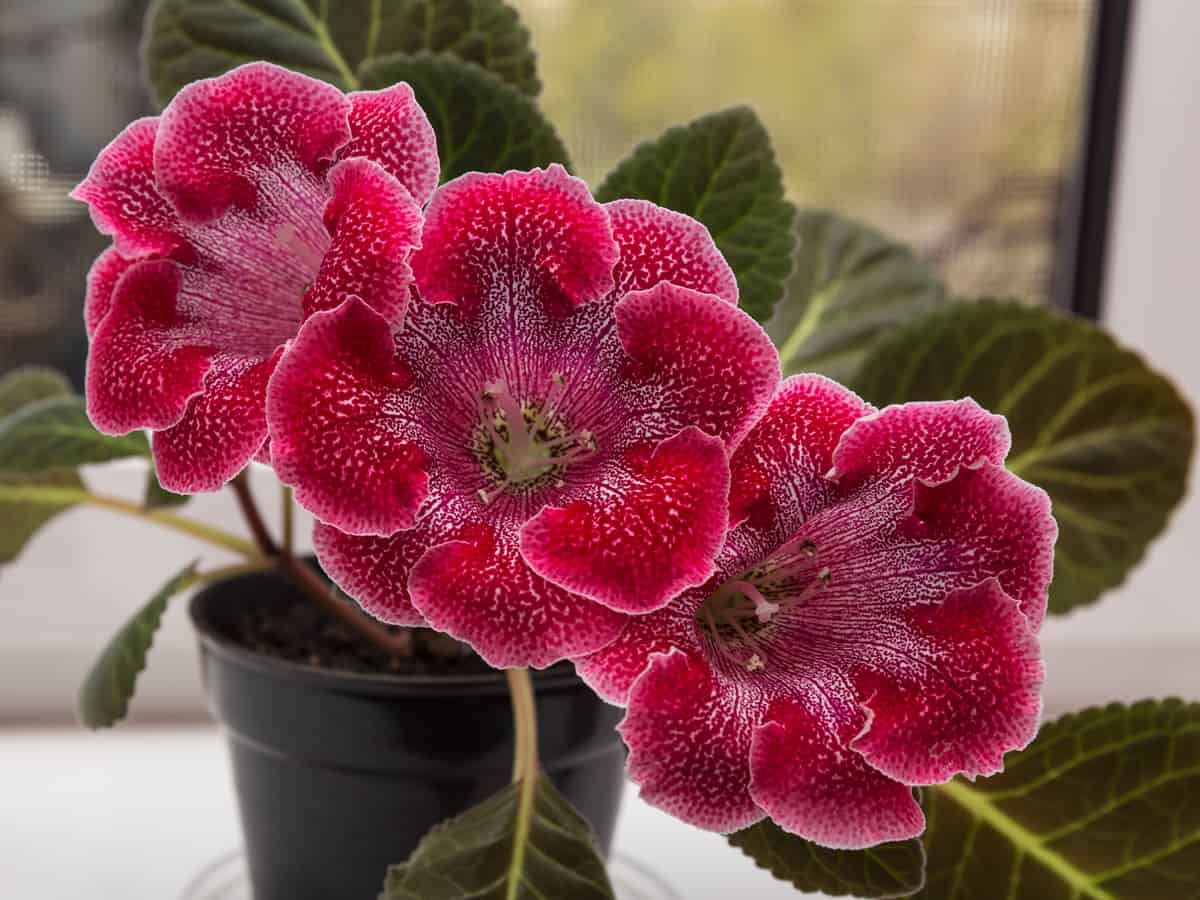
Gloxinias originally came from the forests of Brazil. They are indoor flowering plants that became popular due to their large, bell-shaped, velvety flowers. The colors of these flowers vary from red, pink, purple, blue, or white.
They make great centerpieces for living room tables or windowsills that do not have direct sunlight exposure. Although they regrow after blooming, it is probably a good option to discard bloomed gloxinias because they may never regain their original look and robustness.
Lacy Tree (Philodendron bipinnatifidum)

Lacy tree is a classic no-fail indoor houseplant that is perfect for beginners due to its ability to grow quickly. It has split leaves or lacy-looking foliage like monstera deliciosa or Swiss cheese plant which is why many people commonly mix them up.
Despite their commonality, these two plant species are different. A mature lacy tree has a stem with fish eye patterns while Swiss cheese is more like a climber.
To grow a lacy tree, choose a location with indirect sunlight. Make sure not to overwater the soil because the plant may rot if it becomes soggy.
Baby Rubber Plant (Peperomia obtusifolia) – Dish Garden Indoor Plant
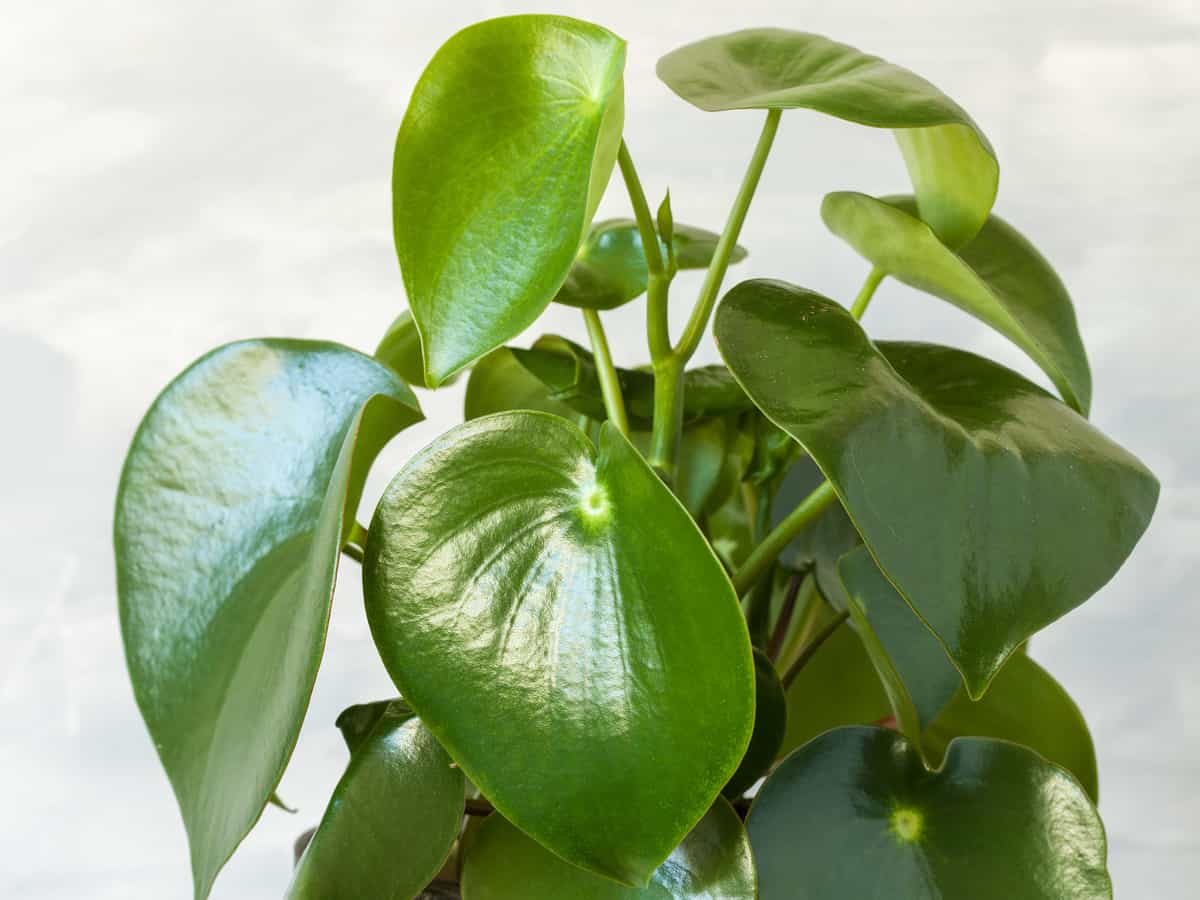
American rubber plant, sometimes referred to as pepper face, is an evergreen perennial native to South America. The primary characteristic of this plant is the glossy leaves that have a fleshy succulent look with thin non-woody stems.
Baby plants can produce white flowers spring to fall but are not as showy-looking as the leaves. Most rubber plants are easy to grow. They are perfect additions to windowsills in small dishes and are non-toxic to dogs and cats.
It is best not to place these plants in direct sun because too much light will harm them. South facing, East and Westside windows are best, but this also depends on specific leaf color and variegation.
Whether you are new to planting indoor greenery or not, it is possible to grow any of the plants listed above successfully.
With a little knowledge and patience, you can add life to dark rooms by starting with easy-care indoor plants that are suitable for poor lighting conditions. So, grab some planters or baskets to start your botanical adventure with these indoor plants!
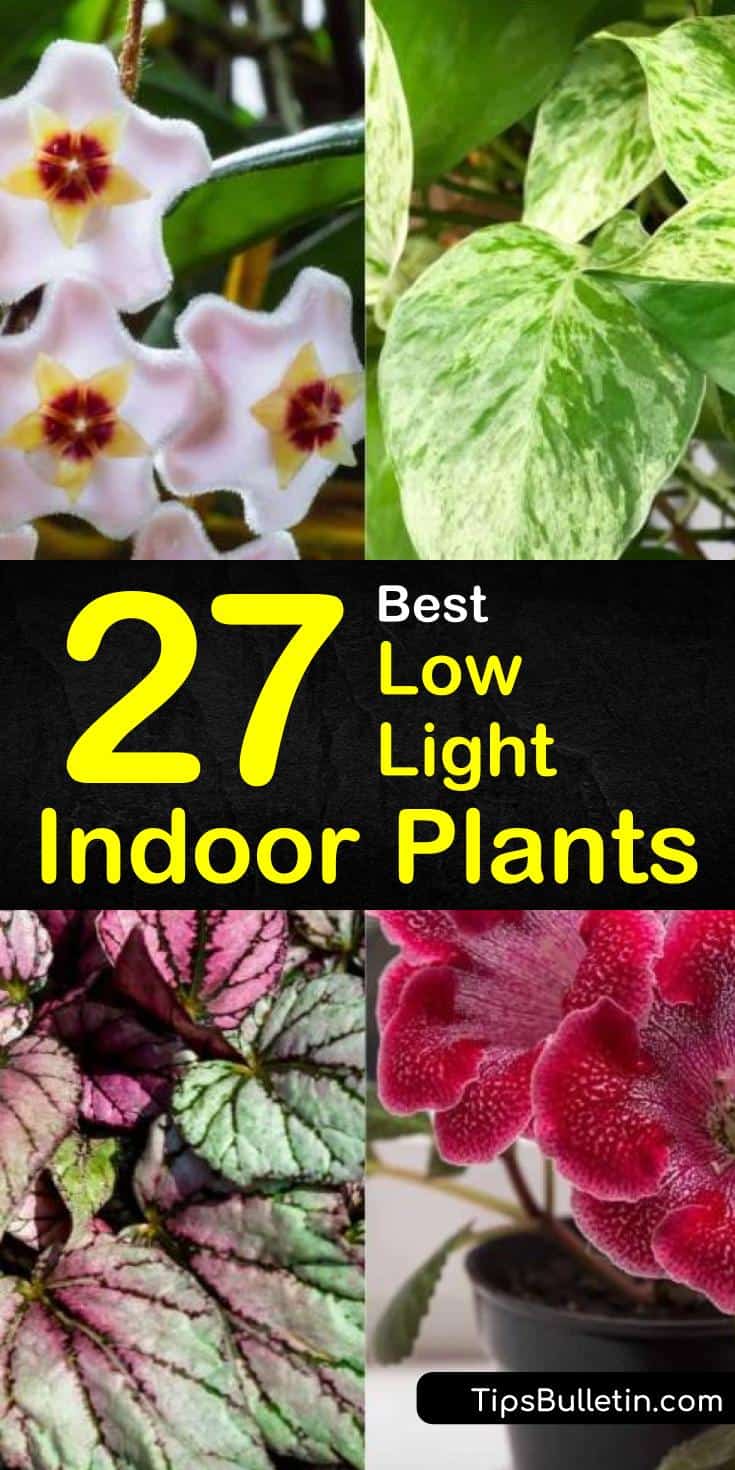
We hope that this list assisted you in picking the right plant for your indoor landscaping needs. If you enjoyed this article about the best indoor plants for low lighting conditions, please share this low light plant advice with your friends and family on Pinterest and Facebook.